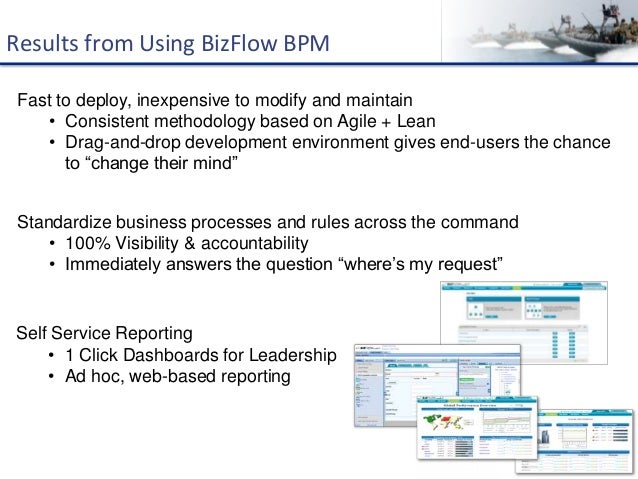Bizflow Process Studio

Joinwork Process Studio is a Business Process Modeling tool which implements the OMG standard BPMN 2.0. By using the tool you can visually model your business. Knight Rider 3 Pc Game more. Soft Annouces 'Biz. Kerkythea Materials Pack. Flow Integration Studio'. Flow Integration Studio enables clients to improve operations by removing legacy system integration barriers.
Make sure you have both a BizFlow Designer and BizFlow WebMaker license. Open BizFlow Process Studio (BPS). To connect to a server, double click the server name in BizFlow Explorer. To add a new server, go to File/New/BizFlow Server. Log in to the BizFlow server using credentials with both a Designer and a WebMaker license. Click the WebMaker icon in the BPS toolbar or go to File/New/BizFlow WebMaker to launch BizFlow WebMaker.
BizFlow WebMaker is launched in a new browser window. Set your browser options to optimize BizFlow WebMaker with your web browser. For Microsoft Internet Explorer (IE), go to Tools/Internet Options/Settings and choose ‘Let Internet Explorer decide how pop-ups should open’.
For Firefox, go to Tools/Options/Tabs and choose ‘Open new windows in a new tab instead’. For Safari, go to Preferences/Tabs and set ‘Open pages in tabs instead of windows’ to Automatically. Select the Data Source tab on the left and choose BizFlow as the data source type. Enter the name of the process definition that you want to use, then click the 'Search' link. Make sure that the process definition is published to the Operational Environment.
If your process definition has not been published to Operational Environment, you won't be able to use it to create a page. If the result is none, you can choose 'Use Local Copy' to bring the latest Workitem Context you found before. Click the Name or Process ID to select the process definition you want to use. BizFlow WebMaker retrieves the process variables and shows them as a part of Workitem Context (for example, Schema: BizFlow_WorkitemContext.xsd). The Add Process Variable feature allows you to add more process variables if they are not presented in the Workitem Context. Adding a new process variable here does not automatically create the process variable in the selected process definition.
You have to create the process variable using BizFlow Process Studio. Drag and drop any nodes in WorkitemContext, and create the user interface for your page. The WorkitemContext gives the context of the workitem within your Web application. The Web application that you build in BizFlow WebMaker will be used within a workitem. Users will receive the work in the My Work BizCove and open a workitem with BizFlow Workitem Handler. Your Web application, as a part of the workitem, will be displayed as a tab in the BizFlow Workitem Handler. Your application will need various information, including: who the current user is, which activity this workitem is from, the current value of certain process variables, and so on.
Your application could use such information to show or hide certain fields or sections, make the whole form read-only, or simply show the information. In general, when BizFlow brings a Web-based application (such as your BizFlow WebMaker application) into the Workitem Handler, it passes a set of key identifiers, such as process instance identifier, activity identifier, workitem identifier, application identifier, whether the application is supposed to be read-only, whether the process is running or complete, and so on. Web applications, then use these identifiers and the BizFlow API to get more context.
The WorkitemContext already has most of the information your Web application would need with regard to workspace information. When you build a Web application, use WorkitemContext to utilize activity name to show/hide certain fields, to display process variable values and update them with new values, and so on. Table of workitem context details: Node Description Example Process This section contains information about the current process instance. ID A unique number for the current process instance.
19977 Name The current process instance name. Opportunity Registration Description Description of the current process. Sample description ProcessState The current status of process, using the following values: 'N': Not started 'R': Running 'S': Suspended 'A': Aborted 'T': Terminated 'C': Completed 'D': Dead 'J': Rejected 'E': In error 'V': Deadline has been met. R ProcessDefinitionID A unique number identifying the process definition, from which the current process instance is inherited. 590 ProcessDefinitionName The name of a process definition. Opportunity Registration Deadline A date and time in GMT for the current process deadline in the format of yyyy/MM/dd HH:mm:ss.